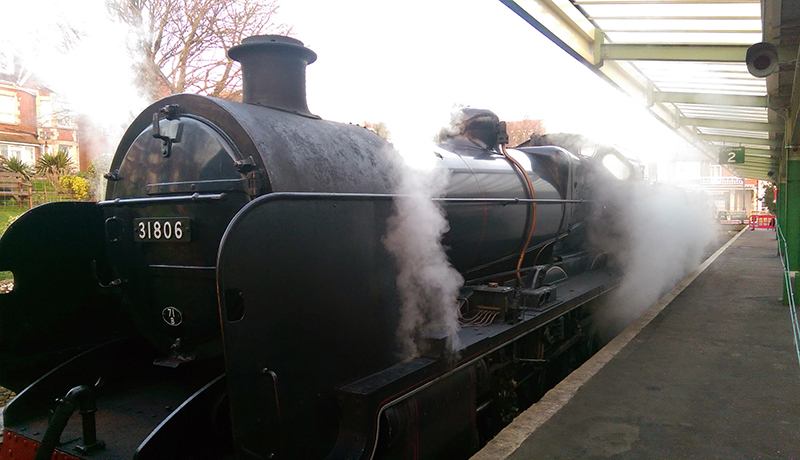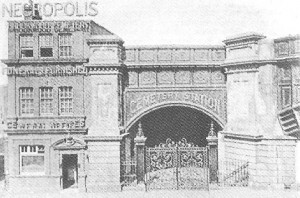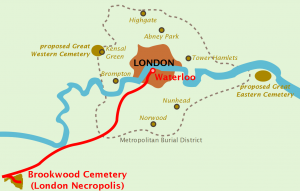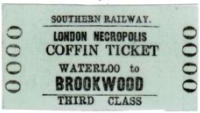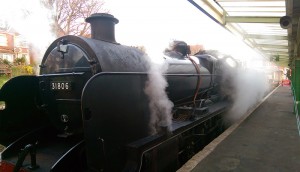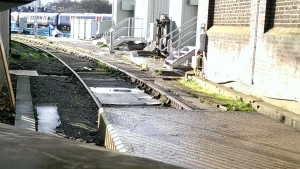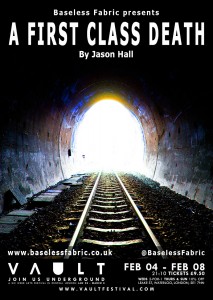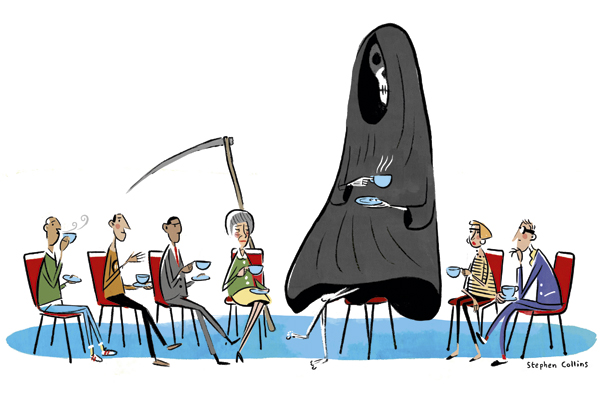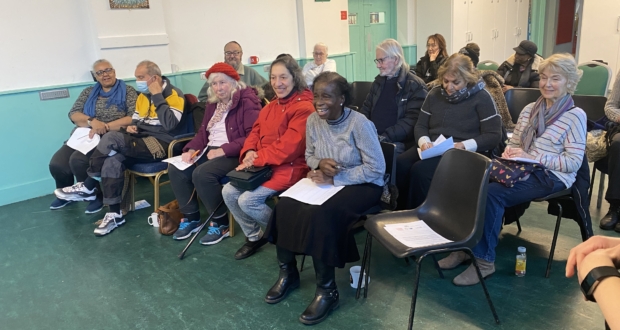The London Necropolis Railway existed from 1854 to 1941 to transport London’s dead and their mourners from Waterloo to Brookwood Cemetery in Surrey. It opened in response to severe overcrowding in London’s existing cemeteries. The newly built Brookwood Cemetery was intended to home the entirety of London’s dead for at least the next 150 years. Most of the route of the London Necropolis Railway ran on the existing London and South Western Railway (LSWR).
The first station was completed in 1854, at a total construction cost of around £1.9 million today. It was specifically designed for the use of mourners, so had many private waiting rooms, which could be used to hold funeral services, and a hydraulic lift to raise coffins to platform level. Existing railway arches (now the Leake Street Vaults) were used for the storage of bodies.
In 1899, the London Necropolis Railway station was blocking the expansion of Waterloo station so, in return for the existing site, the LSWR supplied them with a new station on Westminster Bridge Road. This new building was designed to contrast with other funeral directors’ premises by being as attractive as possible.
Why did they need a Necropolis Railway?
In 1801, the population of London was a little under a million people, but within fifty years the population quickly expanded to 2.5 million. There was a crisis in London concerning its dead. With limited space for burials in the city’s graveyards, it wasn’t just the old graves that were exhumed to free space for new burials. Grave diggers reported having to cut up recently buried bodies; paupers’ coffins remained unburied in church crypts; and there are records of ‘mingled dirt and human remains’ being thrown into the Thames from Waterloo Bridge. Decaying corpses contaminated the water supply, and the city suffered regular epidemics of cholera, smallpox, measles and typhoid, which resulted in more deaths and more bodies. After a cholera epidemic in 1849 killed near 15,000 people, something had to be done to cope with London’s dead.
What class are you?
The London Necropolis Company offered three classes of funerals. First Class allowed complete choice of gravesite within Brookwood cemetery, and a permanent memorial. Costs began at £2 (about £205 in 2015) for a basic 9-by-4-foot plot with no special coffin specifications.
Second Class cost £1 (about £82 in 2015) and allowed some choice of burial location. A permanent memorial would cost an additional 10 shillings (about £41 today), and if a permanent memorial was not erected the LNC reserved the right to re-use the grave in future.
Third Class were buried at parish expense in a section of the cemetery designated for that parish; this was known as a Pauper Funeral. No permanent memorials were allowed.
A First Class Experience
If you chose first class, you would enter through a driveway under the office building. Under a glass canopy, you would be greeted with glazed white brick, palm and bay trees, and pass mortuaries and storerooms to reach an elaborate wrought-iron staircase. Arriving at the upper level, you would enter a sumptuous oak-panelled Chapelle Ardente, intended for mourners who were unable to make the journey to Brookwood to pay their respects to the deceased. You would then go to the first class platform, lined with five separate waiting rooms for individual funeral parties and a ticket office. Here you would wait for the train to take you to the burial site.
The Demise of the Necropolis Railways
Originally the service was meant to run daily, but the train only ran if there was at least one first class coffin or passenger. The service would be cancelled if there were only second or third class coffins to be carried; they would have to wait until the next service. By 1902, the daily service had discontinued and trains ran only as required.
During the Second World War, Waterloo station and the nearby Thames bridges were a significant target. During the night of 16 April 1941, bombs repeatedly fell on the Waterloo area. The rolling stock stored in the Necropolis was burned, and the railway arch connecting the main line to the Necropolis terminus was damaged. On 11 May 1941 the station was officially declared closed.
Come see it for yourself!
The Necropolis line is re-opening for 5 nights only. From 4 – 8 Feb 2015, join us on a journey around Lower Marsh and venture down underground into the Leake Street Vaults to explore the inevitability of death.
It’s time to plan your funeral.
Ready?…
1854: London’s cemeteries are full. The London Necropolis Railway is built in Waterloo station to transport the dead outside the city. 2015: London’s cemeteries are filling. The line is re-opening. And you’ve got a ticket. Baseless Fabric invite you onboard for this promenade performance about the fact you’re going to die one day.
A First Class Death uses the fascinating history of Waterloo’s vaults to explore the attitudes and rituals around dying today. The piece will challenge, entertain and involve the audience as they move through the local area and the atmospheric Cavern space, once a repository for the dead awaiting their final journey.

